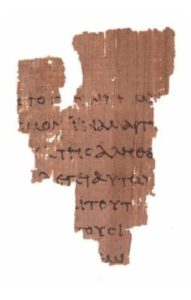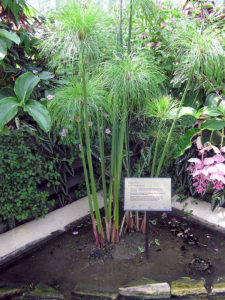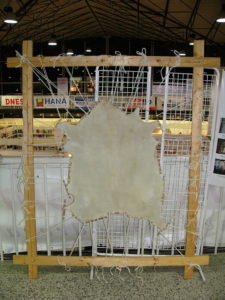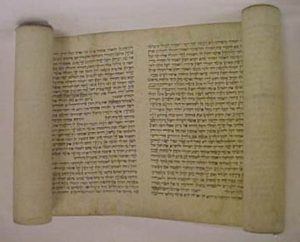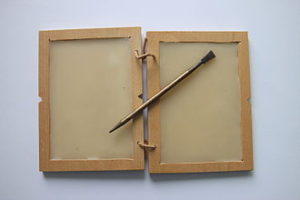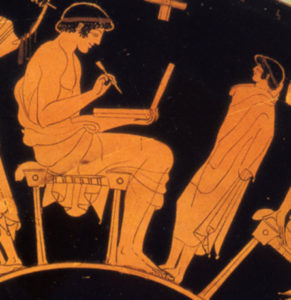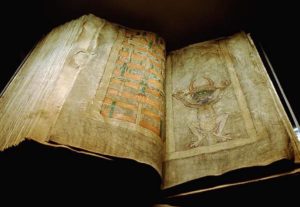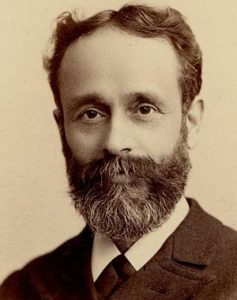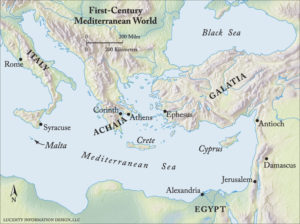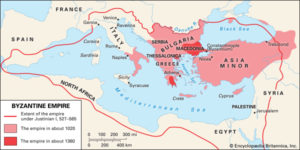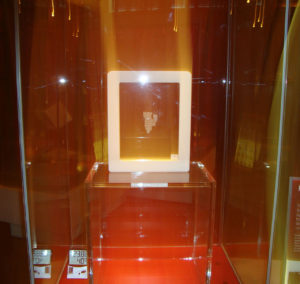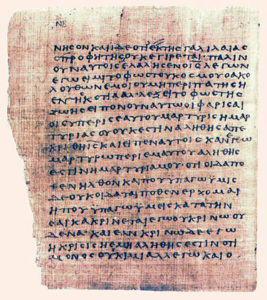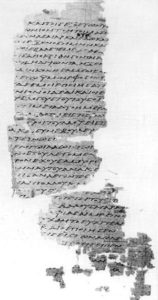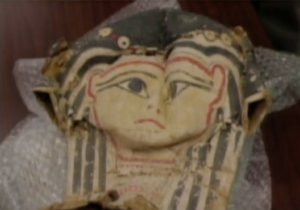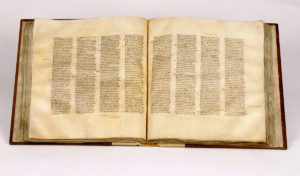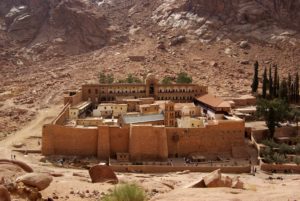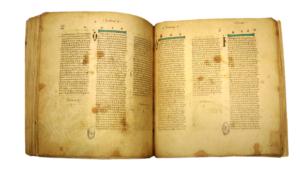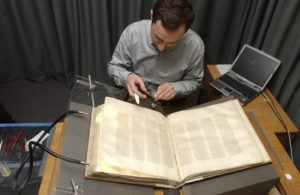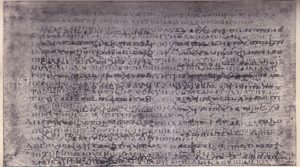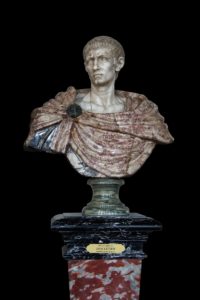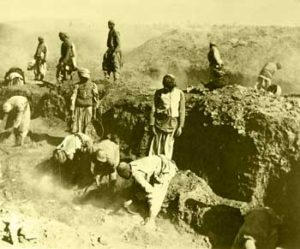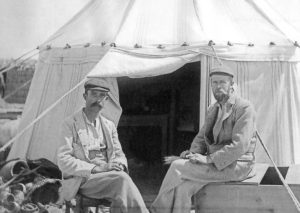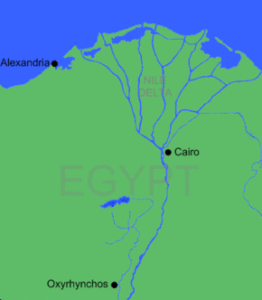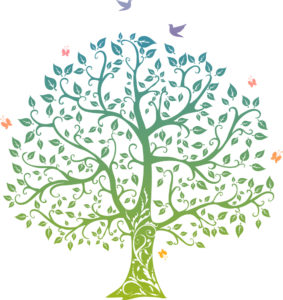Early New Testament Manuscripts by Kevin Rogers, 13 October 2016.
January 2, 2017
This presentation is available on You tube.
Introduction
The New Testament (NT) manuscripts are defined as those manuscripts that are still extant that were copied manually prior to the invention of the printing press. This article gives an overview of the New Testament manuscripts. It is a summary of a talk that is view-able on YouTube.
This article covers:
- Writing Forms,
- New Testament Papyri,
- Highly Significant Papyri,
- The great uncial codices,
- Criticisms of the manuscript record, and
- The significance of the NT manuscripts.
Writing Forms
The early New Testament manuscripts were recorded on papyrus, parchment and vellum.
Papyrus was made from the pith of papyrus plants. The method originated in Egypt in 4th millennium BC and papyrus was originally used in scrolls. In the 1st century the scrolls were cut into sheets to form codices (described later). The writing implements were reed pens made from straw or bamboo and the ink was most commonly made from soot, but they sometimes used octopus ink.
Parchment was made from animal skins, such as calf, goat or sheep. It originated in the 24th century BC in Egypt. It was cheaper than papyrus and gradually displaced it.
Vellum was a type of parchment, which was made almost exclusively from calf skin, which was higher quality. It was treated by scraping and other processes and the animal skins were from young or stillborn animals.
The manuscripts were recorded on scrolls, wax tablets and codices.
Scrolls were made from sheets of papyrus or parchment that were glued together, divided up into pages and then rolled into scrolls at both ends. They were written on one side only and could only be read sequentially.
Wax tablets originated in about the 14th century BC. They were made of wood on which was a layer of wax.
They were portable and reusable, as the text could be erased by melting the wax. The writing implement was a stylus that was used to scratch grooves into the wax. Early sources underlying the gospels most probably were recorded on wax tablets in Aramaic that was subsequently translated into Greek and recorded in codices. In “Jesus, evidence and argument or Mythicist Myths”, Maurice Casey gives an argument for why this could be so. Luke 11:42 states, “But woe to you Pharisees, for you tithe mint and rue and every herb and pass over justice and the love of God”, whereas Matthew says “dill and cumin”. So one says rue and the other says dill. The Aramaic words are both 4 letter words that differ only by one character that can easily be confused on a wax tablet. Casey describes several other examples that account for minor differences between Matthew and Luke.
Codex is Latin for “book”. The codex was invented by Romans in the 1st century and was the forerunner of the modern book.
A codex was made from sheets of papyrus or vellum, bound in book form and written on both sides. Hence any fragment written on both sides was immediately recognisable as being from a codex. It allowed random access rather than being read just sequentially. The codex was associated with the rise of Christianity and most of the early codices were Christian writings. Thus any fragment that was double sided was almost exclusively Christian.
New Testament manuscripts are generally dated using palaeography or radio carbon dating. Palaeography is the study of ancient handwriting and exploits the fact that language, alphabets, characters and abbreviations vary over time. The date ranges for date estimates are between 25 to 125 years. Radio-carbon dating provides date ranges from 10 to 100 years.
New Testament Papyri
A New Testament papyrus is a copy of a portion of the New Testament made on papyrus. These are the earliest witnesses to the original text of the NT. Each papyrus fragment is identified by a numbering system that was introduced by Caspar Rene Gregory (1846-1917).
He used the gothic Blackletter B, but P is commonly used, e.g., P52. The number indicates the order of registration, not the date of the manuscript. The number of papyri that have been discovered in the last 100 years has increased significantly. In 1900 9 were known, in 1963 76 were known and in 2015 131 were known. A full list of the known papyri is available at https://en.wikipedia.org/wiki/List_of_New_Testament_papyri.
The Chester Beatty Papyri and the Bodmer Papyri are 2 highly significant collections of papyri.
The Chester Beatty Papyri are a group of Greek, papyrus, biblical 2nd & 3rd century codices. They were bought from an Egyptian dealer by Alfred Chester Beatty who announced the collection in 1931. They include P45, P46 and P47. They are now mainly housed in the Chester Beatty Library in Dublin and the University of Michigan.
The Bodmer Papyri were discovered in Pabau, near Dishna in Egypt in 1952. They were supposedly stolen from the Pachomian monks (who were followers of St Pachomius) and smuggled to Switzerland. They in fact were purchased by Martin Bodmer (1899-1971). They include 22 papyri including P66, P72 and P75. In 2007, they were transported from Switzerland to the Vatican in “an armed motorcade surrounded by people with machine guns“, and are now kept in the Vatican Library.
Text Types
New Testament manuscripts are usually classified into 3 text types:
- Alexandrian,
- Western, and
- Byzantine.
The Alexandrian text types are from the region of Alexandria in Egypt. These are early well-regarded texts that were produced using a carefully controlled copying process. These are the basis of most modern translations.
The western text-type is also called the Caesarean text type. These manuscripts are also very early texts, but come from the regions of North Africa, Italy and Gaul (France). They were less well-controlled and used more paraphrases and included corruptions.
The Byzantine text-type is also called the Koine text-type, as it was from the Greek part of the Roman empire, where Koine Greek was the predominant language.
This is a late tradition and comprises 95% of all New Testament manuscripts. They contain the most paraphrases and additions and are the basis for Reformation era translations (such as the King James version) and they are also the basis of the textus-receptus, which was used to produce the German Luther Bible.
Highly Significant Papyri
This section briefly describes some of the highly significant Papyri.
The Rylands Library Papyrus P52 is also called the St John’s Fragment.
This has writing on both sides, which made it immediately identifiable as a Christian papyrus codex. It was purchased in 1920 at an Egyptian market and stored in the Rylands library in Manchester. In 1935 CH Roberts identified it and realised its significance. He dated it to about 125 AD. It contains 2 texts on either side from the gospel of John, which are both from the trial of Jesus:
- Pilate then went back inside the palace, summoned Jesus and asked him, “Are you the king of the Jews?” “Is that your own idea,” Jesus asked, “or did others talk to you about me?” “Am I a Jew?” Pilate replied. “Your own people and chief priests handed you over to me. What is it you have done?” (John 18:31-33), and
- “You are a king, then!” said Pilate. Jesus answered, “You say that I am a king. In fact, the reason I was born and came into the world is to testify to the truth. Everyone on the side of truth listens to me.” “What is truth?” retorted Pilate. With this he went out again to the Jews gathered there and said, “I find no basis for a charge against him. John 18:37-38
P52 was from Egypt, which is a long way from the source of writing (supposedly Ephesus). Thus the original must have been written significantly earlier.
P66 is part of the Bodmer collection, which was discovered in 1952.
It contains much of the gospel of John. It has been dated variously to 150 AD, 200 AD or the 4th century. It omits the account of the woman caught in adultery (7:53-8:11).
P45 is part of the Chester Beatty collection.
It is dated about 250 AD and comes from Egypt. The original codex would have contained 220 pages, but only 30 survive. It contains sections from the 4 gospels and Acts.
P46 is highly significant. It is an Alexandrian text-type and is also part of the Chester Beatty collection. It is mostly dated 175-225 AD but others date it earlier in the range 150-175 AD. It contains most of Paul’s letters plus Hebrews. In particular, it contains 8 chapters of Romans (the remainder were in lost pages), virtually all of 1 & 2 Corinthians, 2 chapters of 1 Thessalonians, all of Ephesians, Galatians, Philippians and Colossians, but it doesn’t include the pastoral epistles (1&2 Timothy and Titus).
P75 is part of the Bodmer Collection and is dated 175-225. It contains most of Luke and John and 102 of the original 140 pages have survived.
Some other significant early papyri are:
- P47, Parts of Revelation, 3rd century,
- P90 (late 2nd Century that contains John 18:36 to 19:7),
- P104 dated 150 AD and contains Matthew 21:34-37. This is the earliest surviving text of Matthew.
- P98: Revelation 1:3 to 2:1, 2nd century
- P4: Luke 1-6, 175-250.
An interesting recent development is accessing texts from mummy masks. Pharaohs had gold masks, rich people had gold plated masks but middle-class Egyptians made masks from paper-mache. In other words, they used unwanted documents to form the masks.
Researchers have now developed a technique to chemically treat the masks and recover the original documents without destroying the writing. This could become a major source of ancient manuscripts of all sorts. It has been claimed that a fragment of Mark from the 1st century has been recovered, but this is yet to be confirmed. So it looks as though a lot of poor mummies are going to lose face for the sake of manuscript research.
The great uncial codices
“Uncial” describes a style of Greek writing. Words are constructed using rounded, single stroke, connected capital letters, which is a forerunner of the cursive style. There are no regular gaps between words. The great uncial codices are virtually complete Greek copies of the Old and New Testaments. The major documents are:
- Codex Sinaiticus (from Sinai),
- Codex Vaticanus (held in the Vatican),
- Codex Alexandrinus (from the Alexandrian region), and
- Codex Ephraemi Rescriptus.
The documents were written on vellum by professional scribes and were based on the most accurate texts of the time. They used a different order of books from what we know, as they were written before the NT canon was finalised.
Codex Sinaiticus is an Alexandrian text-type that was written in the 4th century.
It was discovered by Constantin von Tischendorf in the 19th century at Saint Catherine’s Monastery in the Sinai Peninsula and was supposedly retrieved from the rubbish in the monastery. Tischendorf visited the monastery from 1844 and retrieved the manuscript in 1859, which he delivered to Alexander II, the Tsar of Russia. The text was published in 1862. The Soviet Union sold the codex to the British Museum in 1933 and the complete document is now available online. There was controversy over the acquisition process but it is one of the most valuable resources for establishing the original NT text.
Codex Vaticanus has been conserved in the Vatican Library since the 15th century.
It is dated to the 4th century, it is one of best texts and is a leading example of the Alexandrian text-type. The provenance is debated, but it may have been brought from Constantinople at the fall of the Byzantine Empire (1438-1445).
Codex Alexandrinus is held in the British Library and is dated from 375 AD to the 5th century.
It was brought from Constantinople in 1621 and presented to James I in 1624. The provenance is unknown but it is most probably from Alexandria.
Codex Ephraemi Rescriptus was supposedly composed by Ephrem the Syrian.
It was written on recycled parchment that originally contained scriptural texts. The prior text was washed off and the Biblical text written over the top, although the prior text is still largely visible. It is held in the National Library of France and dates from the 5th century. Some bits are missing and it is mainly Alexandrian text-type. It was brought to Florence from Constantinople at its fall 1453 and presented to Catherine de Medici in 1550.
There are a huge number of NT manuscripts but relatively few from the 2nd and 3rd centuries. Why are there not more? Two reasons are the Roman destruction of Christian books and natural attrition.
Diocletian was the Roman emperor from 284 to 305.
He instigated the Great Persecution in 303 AD, which was eventually ended by Constantine through the edict of Milan in 313 AD. Diocletian rescinded the legal rights of Christians. Christians were forced to comply with Roman religious practices or face imprisonment or execution, but the application was mixed, depending on the attitude of the local Roman administrator. Diocletian ordered the Manicheans to be burnt alive along with their scriptures. He ordered the destruction of all Christian scriptures, but Christians often offered apocryphal works instead and hid their genuine scriptures.
About half of all early fragments have been discovered at a single location at Oxyrhynchus in Egypt.
A large group of manuscripts were discovered in a rubbish tip by Bernhard Grenfell and Arthur Hunt (among others) in the late 19th century.
The manuscripts were dated from the 1st to the 6th century and included OT and NT documents, some 2nd century and many 3rd century. The reasons that so many were discovered at that particular location were the hot dry climate and the fact that it did not flood.
Oxyrhynucs was a fair way from the Nile and received its water supply via a canal. It was a prosperous regional capital, but after the Arab invasion in 641 the canal system fell into disrepair and the city was abandoned and left untouched. There is still a huge amount of potential excavation under the existing town. However, this example shows that documents were only preserved in the best of circumstance and indicates the huge manuscript loss rates that occurred elsewhere.
Criticisms of the manuscript record
Some criticisms of the NT manuscript record are:
- There are no originals
- The copies are not close to the events
- The text was corrupted by Chinese whispers
- There are a small number of copies
- The majority of the copies are late
However, the above is true of all major ancient documents, but much more so. The situation for the NT is far better than any other ancient document. There are well over 20,000 NT manuscripts prior to the invention of the printing press in 1440. There are over 5,600 Greek manuscripts and the remainder are translations in other languages, such as Latin, Coptic, Syrian, Armenian and Georgian. In addition, all of the NT, except for 11 verses, is quoted by the early church fathers and it is virtually possible to reconstruct the entire NT just from the early church fathers who had access to more early copies than we do.
The next best text is the Iliad, which has 1,757 copies. Even more poorly represented are the works of Herodotus, Thucydides, Aristotle, Julius Caesar, Pliny, Tacitus, Josephus and other great figures from history, for which we have more like a dozen manuscripts each. The earliest NT copies are also much closer to the originals (35 to 100 years) than other documents. The earliest copy of the Iliad is 500 years after the original. Other major documents are in the range 750 to 1400 years.
There are over 20,000 manuscripts prior to printing press but the number does indeed increase with time. Most are late. The early ones are more important and the latter ones are less important but there are more of them.
The family of NT manuscripts is like the trunk, branches, twigs and leaves of a tree. Textual critics can compare the leaves, twigs and branches and identify the trunk.
Significance of the NT manuscripts
The New Testament text is far better attested than any other ancient document. Its accuracy is far better than 99%. There are some uncertainties but most of these are trivial. So we can have a high level of confidence that what we now read is very close to what the original authors wrote. Does that make it true? Of course not, but that is another issue.
